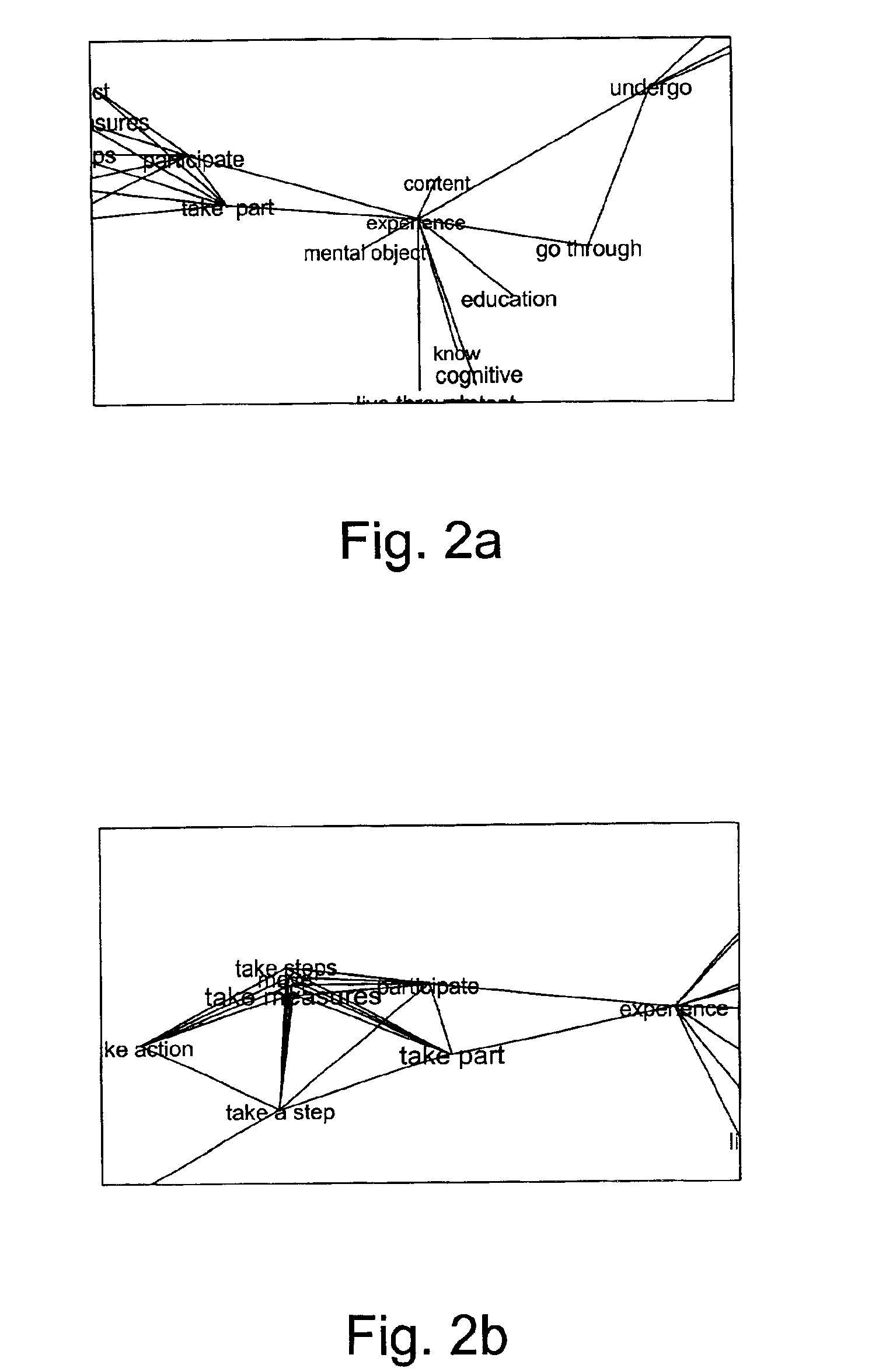Method of navigating a collection of interconnected nodes
a graph and node technology, applied in the field of graph-based user interfaces, can solve the problems of system inability to dynamically rearrange the map in response to user actions, display of nodes and relationships statically, and difficulty in depicting highly non-hierarchical graphs (graphs with significant cross-links among its nodes)
- Summary
- Abstract
- Description
- Claims
- Application Information
AI Technical Summary
Benefits of technology
Problems solved by technology
Method used
Image
Examples
Embodiment Construction
[0052]FIG. 3 is a block diagram of a system that embodies the present invention. The processor 340 is responsible for the main computations associated with interacting and traversing the graph. The memory 330 contains an internal representation of the graph and also is used for various computations and generating the map diagram. The display 350 is responsible for displaying the generated map diagram to the user. The user input device 360 may be a mouse, trackball, keyboard, or any other suitable means for the user to interact with the system. The external storage device 320 may be a hard disk drive, CD-ROM, optical drive, or any other suitable storage device. The network 310 can be the Internet, a local network, or another means of accessing and retrieving information from another computer system. Additional devices may be added to the system, such as an audio system or a different means of displaying the generated map diagrams.
[0053]The current embodiment of the present invention ...
PUM
 Login to View More
Login to View More Abstract
Description
Claims
Application Information
 Login to View More
Login to View More - R&D
- Intellectual Property
- Life Sciences
- Materials
- Tech Scout
- Unparalleled Data Quality
- Higher Quality Content
- 60% Fewer Hallucinations
Browse by: Latest US Patents, China's latest patents, Technical Efficacy Thesaurus, Application Domain, Technology Topic, Popular Technical Reports.
© 2025 PatSnap. All rights reserved.Legal|Privacy policy|Modern Slavery Act Transparency Statement|Sitemap|About US| Contact US: help@patsnap.com



